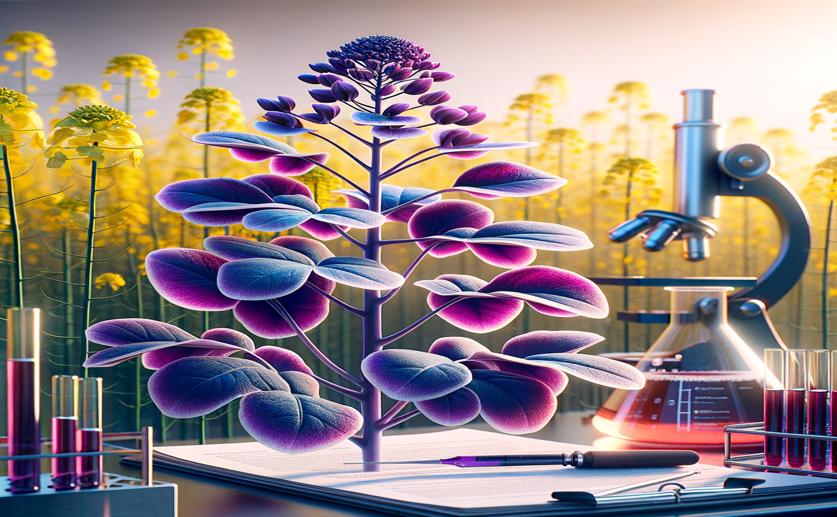
Introducing a Gene to Create Purple Leaves in Canola Plants
Jim Crocker
3rd August, 2024

Image Source: Natural Science News, 2024
Key Findings
- The study by Hunan University of Science and Technology focused on the purple leaf trait in Brassica napus (rapeseed)
- Researchers identified that the purple leaf trait is controlled by the BjMYB113 gene from Brassica juncea
- Knocking out the BjMYB113 gene using CRISPR/Cas9 resulted in green leaves and reduced anthocyanin levels, confirming its role in anthocyanin biosynthesis
References
Main Study
1) The introgression of BjMYB113 from Brassica juncea leads to purple leaf trait in Brassica napus.
Published 2nd August, 2024
https://doi.org/10.1186/s12870-024-05418-5
Related Studies
2) Anthocyanin Biosynthesis and Degradation Mechanisms in Solanaceous Vegetables: A Review.
3) Engineering anthocyanin biosynthesis in plants.
4) Anthocyanins and reactive oxygen species: a team of rivals regulating plant development?
5) Mitigation of salt stress in Indian mustard (Brassica juncea L.) by the application of triacontanol and hydrogen sulfide.



 31st July, 2024 | Jim Crocker
31st July, 2024 | Jim Crocker